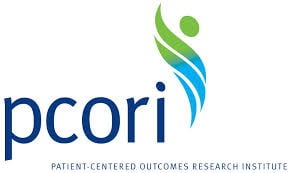Nonprofit Association of Oregon Annual Conference Kicks Off Today
Sheri Jones, author of 'Impact & Excellence: Data-Driven Strategies for Aligning Mission, Culture, and Performance in Nonprofit and Government Organizations' and president of Management Resources Company gives Nonstop her advice on how to increase the effectivess of your nonprofit.

Stanford Social Innovation Review’s 10th Annual Nonprofit Management Institute is taking place September 9th-11th in Stanford, CA, with a welcome reception at the Sheraton Palo Alto on the 8th. The conference focuses on executive education for social sectors, and this year’s theme is “Building Resiliency: Yourself, Your Organization, Your Society.”
Increasing healthcare costs, ACA compliance, balancing ever-precarious budgets, retaining valuable staff…midsize nonprofit organizations must consider many factors related to offering and managing group health coverage these days. More than ever, they need a better solution to the dilemma of providing mandated and high-quality employee healthcare while also watching the bottom line.
While traditional fully-funded healthcare can be expensive and self-funded coverage comes with a significant financial risk, partially self-insuring melds the two into a more affordable health insurance option with less monetary risk.
On July 6, 2015, the Department of Labor (DOL) issued a proposal to more than double the minimum salary level that white-collar workers must be paid to be exempt from overtime, from $23,660 to $50,400 annually (or from $455/week to $970/week). With a debate centering around if the proposed salary levels are set correctly (and how future increases will be considered), a public forum for written comments is open until September 4th, 2015. The proposed amounts are at the 40th percentile of weekly earnings for US employees, and apply only to non-exempt employees (e.g. any employee not considered “executive, administrative or professional”). If approved, the Obama administration says that these changes would impact nearly 5 million US workers within the first year.

If your organization sponsors a self-insured plan, you may be on the hook to contribute to the Patient-Centered Outcomes Research Institute (PCORI) Research Trust Fund by July 31, 2015. This fee applies to applicable self-insured plans, including health reimbursement arrangements (HRAs) and flexible spending arrangements (FSAs) that don’t qualify as excepted benefits. In addition, employers who provide COBRA coverage and major medical coverage that falls under multiple policies or plans may also be obligated to contribute to PCORI.

Our final post in the series about preparing for the 2016 renewal season discusses how to better satisfy both employee needs and your bottom line by designing more customized healthcare options (previous posts looked at compliance and cost).

Over the past week, we have been looking at how nonprofits can prepare for the 2016 healthcare renewal season (which goes into effect November 1), specifically with regards to compliance, cost, and employee needs. In this post, we will discuss innovative approaches to health coverage that can actually reduce costs while still offering rich employee benefits.

In February 2014 David Camp (R-Mich; former chairman of the House Ways and Means Committee) authored a bill regarding tax policy changes for nonprofits. Proposed changes included executive compensation caps, tighter limits around charitable tax deductions, and mandatory five-year payouts of donor-advised funds.